What is Mad God about?
On the surface, Mad God is a “what if” that imagines a world in which God has punished human arrogance. This is why the opening cites both the story of the Tower of Babel and Leviticus 26. We see this bleak and awful world that isn’t simply abandoned by God but actively punished. The end result is a miserable existence for pretty much every living thing. And there’s no relief. No mechanism for forgiveness. In fact, the movie posits that, given an opportunity to forge a whole new world, humans would once again lead themselves into the folly of self-destruction. The journey the suited-up Assassin goes on is ultimately about destruction, planting a bomb that will end a world. At that point, an end is the only form of relief.
You could view Mad God as nothing more than an imaginative journey, a kind of existential Fantasia that’s spectacle for the sake of spectacle, and appreciate the beauty found in the ugliness.
The deeper reading is that Mad God is a statement about our world. There’s the glass half-empty reading that our world is essentially this awful, hopeless place where all of us kind of toil until our sudden demise. The glass half-full reading is that our world isn’t that bleak, that we actually have it pretty good, that there is hope for civilization and individuals within that civilization to be happy.
And I want to say up front, regardless of how you might feel about what happens in the movie, the actual stop motion animation is outrageous. Honestly, one of the most impressive things I’ve ever seen. So I think Phil Tippett deserves special acknowledgment just for creating a work of art that’s an unprecedented technical achievement.
Cast
- Alex Cox – Last Man
- Niketa Roman – Nurse
- Satish Ratakonda – Surgeon
- Arne Hain – Surgeon
- Anarchists – Harper Taylor, Brynn Taylor
- Phil Tippett – Director
Mad God themes and meaning
The best place to begin with the themes of Mad God are the opening scenes. First, we see a depiction of the Tower of Babel. It’s a myth from Genesis 11:1-9. Here’s the NIV of the story:
Now the whole world had one language and a common speech. As people moved eastward, they found a plain in Shinar and settled there. They said to each other, “Come, let’s make bricks and bake them thoroughly.” They used brick instead of stone, and tar for mortar. Then they said, “Come, let us build ourselves a city, with a tower that reaches to the heavens, so that we may make a name for ourselves; otherwise we will be scattered over the face of the whole earth.” But the Lord came down to see the city and the tower the people were building. The Lord said, “If as one people speaking the same language they have begun to do this, then nothing they plan to do will be impossible for them. Come, let us go down and confuse their language so they will not understand each other.” So the Lord scattered them from there over all the earth, and they stopped building the city.
So in the original biblical version, God puts a halt to the tower by making communication impossible and breaking the collective of people into fragments strewed across the world. Many cultures have similar myths, with several ending in calamity. The angered god or gods don’t just prevent the building of the tower but destroy it and the people. So Mad God adapts the Biblical story but intensifies it. Lightning strikes and implodes the leader of the tower people. Dark clouds fall from the sky and consume the building and everyone in the society that built it. It’s the annihilation of an entire civilization.
It cuts from the Babel adaptation, to the title screen, to parchment from Leviticus 26. The parchment reads:
If you disobey Me and remain hostile to Me, I will act against you in wrathful hostility. I, for My part, will discipline you sevenfold for your sins. You shall eat the flesh of your sons and the flesh of your daughters. I will destroy your cult places and cut down your incense stands, and I will heap your carcasses upon your lifeless idols. I will spurn you. I will lay your cities in ruin and make your sanctuaries desolate and I will not savor your pleasing odors. I will make the land desolate so that your enemies who settle it shall be appalled by it. And you I will scatter among the nations and I will unsheath the sword against you. Your land shall become a desolation and your cities a ruin.
I mean. Geeze. That’s what God sounds like when upset. So with that in mind, think about what happened in the Babel depiction. God felt disobeyed so unleashed wrathful hostility. That opening depiction is almost childish and simple. Little figures on a tower consumed by black clouds. But that only is a wheting of the appetite. It’s setting the tone. What follows in the film is a far more detailed picture of what it means to live in a world revoked by God. The ugliness. The horror. The brutality.
So this tells us what the overall concept is. The main question is why? Why tell this story? What’s it saying? When we look at the actions within the movie, you see a population completely callous to the pain of others. The suited-up character, known as The Assassin, has multiple opportunities to help people and creatures. He always passes them up. We see countless living things hurt and consumed. It’s awful. The people of this world exploit and are in turn exploited.
The only act of compassion we ever see is the little Alchemist who has a terrarium where he feeds these little creatures some maggots. The one creature happily feeds another that looks just like it. It’s a momentary bright spot in the midst of so much awfulness. But it turns out to only be a decoy. The happy creatures are actually the food for some carnivorous spider-like creatures. The creature feeding its friend? It runs away, saving itself as the spider descends upon the friend. The Alchemist is overjoyed. So there’s just zero genuine compassion. Even a baby gets sacrificed to give birth to a new universe. And the people in that universe just build their own version of Babel and end up destroyed. So the sacrifice of the baby and the hope that maybe people will get it right somewhere else just result in more hopelessness.
You begin to get the sense that Mad God is a critique of society. A statement along the lines of “The world may look nice but it’s actually as ugly and brutal as this place.” That would be the more bitter reading of what transpires. Another way of looking at it would be as cautionary. “If we’re not careful, this is the way the world could go. We’re ::this:: close to making God angry.” And then, of course, there’s the optimists perspective. The view that our world isn’t so awful. That it could be much worse. And that we should try and appreciate the time we have and do our best to stay on a positive path. To give a helping hand. To look out for one another. To retain some semblance of a soul and a conscience. In its devoutness to ghastliness of an angry God, it almost makes the case for gratefulness. Look around you and take solace.
There’s a lot more to expand upon but I’m going to have to divide it into sections about the title and the end. So, please, read on, to get a better understanding of the movie’s nuance.
Why the movie is called Mad God
We’ve introduced what I think is the primary reading of the title. As told in Leviticus 26, people have angered God. And the movie is essentially showing us a world stricken by God. Given the introductory scenes with Babel and the Biblical text, there’s almost no denying the primary reading. But that doesn’t mean it’s the only reading.
“Mad” doesn’t have to mean angry. It can also refer to a state of insanity or disturbedness. Or even foolishness. That broadens the ways in which you can read what’s happening. Like, yes, God is angry and has punished the world. But isn’t bringing about this amount of chaos and pain and tragedy actually quite mad? What does it accomplish? What does it achieve? What’s the point of being the most powerful being in the universe, the creator of the universe, if this is how you use your power?
This broader application of the word “mad” turns Mad God from a critique about people to a critique about figureheads. Those in charge. Those who decide the fates of others. And the ways in which such “Gods” can go about their tenure with a churlishness that benefits no one. You see this reflected in the character of the Last Man. While the Last Man doesn’t seem to be God itself, he is a figure that lives above the rest of the world and sends these Assassins with bombs in briefcases down into other worlds to blow them up. There’s a madness to that. Why bother? What does it accomplish? Why spend the time and resources? Isn’t there a better use of time?
Speaking of time, let’s talk about the end of Mad God.
The ending of Mad God explained
The final scene of Mad God is a bit of an extended sequence. So the Last Man sends The Assassin down to some world with a map that shows where The Assassin is to place a bomb. A creature kidnaps The Assassin and brings him to a place where a surgeon digs into the core of The Assassin until finding this worm-like baby that cries just like a baby. A nurse brings the worm to this awe-inspiring floating creature that travels a great distance to another domain where the Alchemist helps the creature convert the baby into a dazzling pile of dust that’s thrown in front of a great forge that burns like a sun. This begins the final scene.
The dust ends up alchemizing into an entirely new universe. The formation sequence is actually quite similar to the “birth of the universe” sequence from The Tree of Life, though it happens much faster. It’s essentially a quick big bang, expansion, leading to suns and early planetary bodies. But all the sudden there’s an alien spaceship and planets lined up like school children in single-file waiting to march out of the classroom. A spinning obsidian rectangle, a monolith, crashes into a bland world and the impact triggers the formation of life. We see life evolve from microscopic organisms to far more complex entities. Eventually there’s aquatic life. Then human life. And human life leads to civilization. Massive, modern skyscrapers form from the ether before our eyes.
This is a moment that needs singled out. The modern city is the first thing that looks like something from our very own world rather than some distant post-apocalyptic mayhem. Behind the buildings is the same red sun we saw at the very beginning in the depiction of Babel. The single tall building eclipsed this huge, red-orange sun. And then, of course, the wrath of God occurred. So when we see the red sun behind the buildings, the expectation is that destruction will soon follow. Sure enough, it does. But it’s not lightning strikes and frothing dark clouds. Instead, we see two young women planet a bomb identical to the one The Assassin had. And they even spray an anarchist “A” on the wall. Military forces fire on the girls and take them out but the device detonates. We cut back to the huge buildings and see their collapse. But the explosion doesn’t just destroy the city. We cut to a series of buildings in different locations and different architectural styles. Every single one erupts. Dirt covers bodies. You get the sense it wasn’t just the city destroyed but the entire planet.
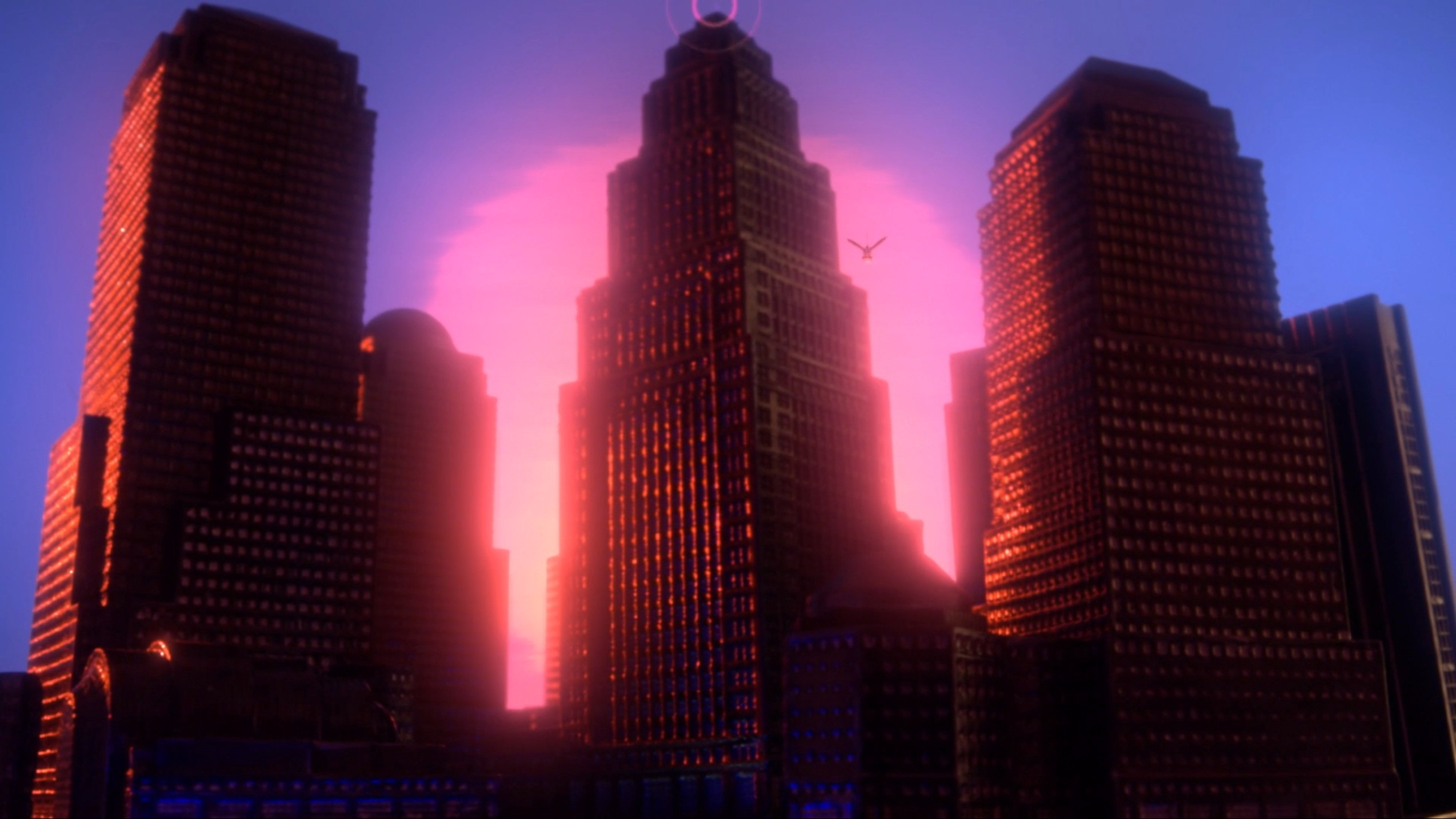

A cut back to outer space shows this area that had a burning sun and many planets is now in eclipse. A black hole has formed and engulfed what was there. Fleeing from that galaxy are several of the monoliths. They had given life. Now they depart with it, leaving the galaxy to catastrophe. From there, we cut back to the Alchemist’s workshop.
The implication of all of that is that the floating creature attempted to create a universe where life could form. My assumption is there was hope that life in another universe could do better than it had on the creature’s planet. I know I said this movie was all bleakness, but that actually strikes me as kind of hopeful. As actually kind of noble? (Though there are other ways to read it). But the end result is only more disappointment. People, once again, angered God. The experiment was a failure.
Back in the Alchemist’s workshop, we see a baby in a jar. This is one of several nods to 2001: a Space Odyssey. The first being, of course, the monoliths that brought life to the other world. I’ll elaborate on this in a section further down specifically about the reference to 2001, but suffice it to say the baby in the jar probably represents something to do with human potential. We cut from that baby to a mass of ticking grandfather clocks. Their moving hands callback to the bomb planted by The Assassin and how the hands on the timer were moving towards 12 o clock before sticking between 10 and 11. All the clocks spinning hour of after hour represent the fact time is passing. In seconds, decades pass. Centuries. The objects in the workshop age. Dust and cobwebs cover everything. The terrarium fills with mold. Candles burn low and out. Then suddenly the clocks reverse. The candles reform. Sand refilled the top of the hourglass. We backtrack through various entities and places encountered earlier in the film. The imagery gets more demonic and religious. It’s full of mythology. Shots of people. Life.
Finally, we cut back to the stalled bomb. The hands resume. The clock strikes midnight. And the last shot is of a cuckoo bird flying out of a grandfather clock as it strikes the hour. While we don’t witness an explosion, the cuckoo bird serves as a metaphor for the eruption. Almost as if it’s calling out, “Time’s up. Time’s up. Time’s up.”
In terms of meaning, I get the sense that with the universe experiment failing, the world ran out of options. All that was left was for time to run out. There was no preventing the annihilation to come. That bomb that hadn’t detonated, thus giving the world time to try and fix things, finally blows. Which can feel like a pretty sad statement about what we can do to try and fix our world. Is there anything an individual can do to improve things? Or is our fate inescapable? All there is is to end. You wait until the end. That’s a statement on the totality of nihilism that Nietzsche would be proud of. The bomb always goes off. Maybe not today. Maybe not tomorrow. But one day. No one escapes this life alive.
The very last shot is of the Last Man at the launch pad for his diving bells. He stands on the platform, above the hole, looking down. Near him is the rope that leads the diving bell down into whatever world. Around the platform, Dozens of motionless Assassins. The rope is in motion, meaning another Assassin has descended to another world. Then we cut to “Phil Tippett’s MAD GOD.”
While that last scene is brief, it actually has a lot going on. First, there’s the discussion as to whether or not the Last Man is the Mad God or a Mad God or has, in this God forsaken world, become like God. I’m not sure there’s a good answer or an intended answer. All potentials have meaning and I think are worth thinking about. But, beyond that, the framing of that scene resembles a miniature of the opening Babel sequence. The Babel sequence saw a leader atop the tower and their followers below. And that final shot shows the Last Man atop the platform and his followers below.
That could simply be a nice visual callback and nothing more. If it is more, it seems to be indicating the Last Man’s setup is similar to Babel. If he is just a normal guy with weird hands then you’d think he would, soon enough, suffer the same booming fate as Babel and the city. But if he’s the mad God, then there’s kind of an irony. Or maybe not even irony but a…pettiness? Like, “Only I can have this. Not you.” Which would tie back to what we talked about earlier with “mad” having multiple meanings. Standing there, watching the diving bell descend, hoping your Assassin destroys another world? It’s just sad. Or, I mean, if the movie really is just about how bad people are, then the Last Man embodies simply how bad people are. Regardless of what interpretation you want to go with, the main takeaway is the Last Man is kind of insane and a disappointing final representative of humanity.
The eye after the credits
Okay, so we’re not done with the end of the movie. After all of the credits, there’s thunder. Then a brief close-up of someone’s eye. There’s so much shadow you can only see the eye because of some ambient light. It goes wide then closes. And the thunder closes everything out.
Now that isn’t the first time we see the eye. Its first appearance is at the beginning, after the Leviticus document explodes into fire. The smoke and fire gives way to the crackle of electricity and the eye appears, Again, the face is shadowed. Only the eyeball is lit. But it’s wide and manic, looking all around. Maybe at the electricity or maybe something else. The shot actually ends by a zoom into the pupil. Then we cut to the film’s first scene, which shows another tower and the diving bell with the main Assassin descending to the floor of that world.
I have a few potential explanations. First, there’s the idea that everything we’re seeing is essentially happening in the brain of someone. It’s their thoughts. Their feelings about God and people and civilization and mortality. It gives a little bit of a frame narrative to everything and grounds what happens in terms of Jungian psychology, getting into symbols and archetypes and things like that.
Second, is that the eye belongs to the floating creature. The creature wears a plague doctor mask with that long, bird-like nose. The mask actually has openings for the eyes. The openings don’t provide for a lot of visibility. But there’s at least a small window to see out of. If you think about if the camera were looking through one of those openings, what would it see? Not much. The mask would be incredibly dark inside, obscuring the wearer’s face. But there’d be enough light on the eye to see their eye. Which is exactly the case in both eyeball scenes. What kind of seals the deal for me is that after the creature throws the baby dust to create the new universe, there’s a profile shot where it gazes about the formation. And you see the eye hole lit up.
The following shot is of the new universe hanging in the air. Our POV is essentially that of the creature. Then the universe flies at us, engulfing the camera. Which is exactly what happened at the beginning of the movie when we saw the lightning and the eye. The eye overtook the camera just like the new universe does. That kind of brings us back to the first idea. The eye led us to this universe that’s in someone’s mind. Or it could just mean that the creature created this universe at the very beginning and we flashed forward to seeing the machinations that led up to its demise, the same way we see the final explosion of the new universe.
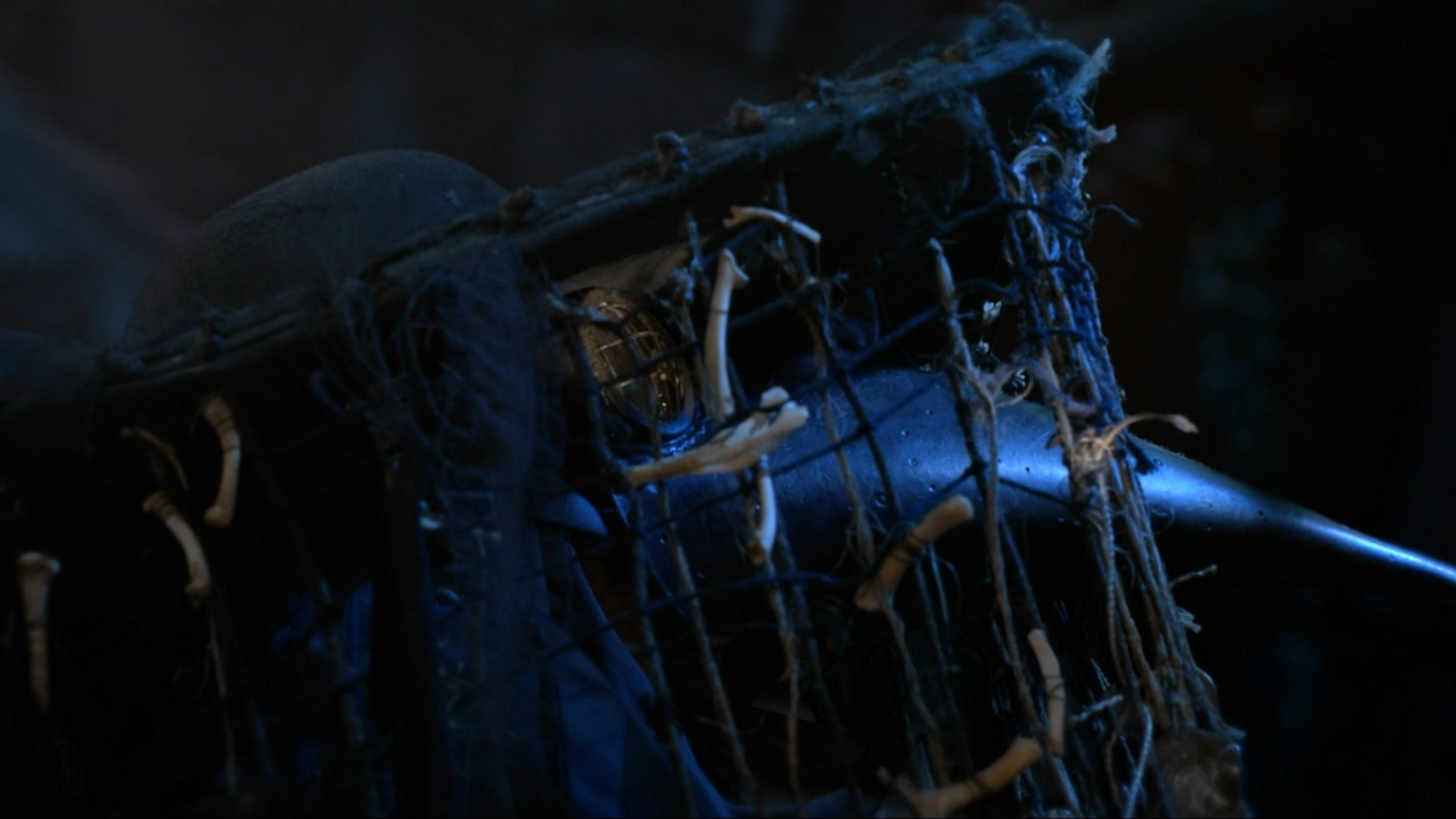
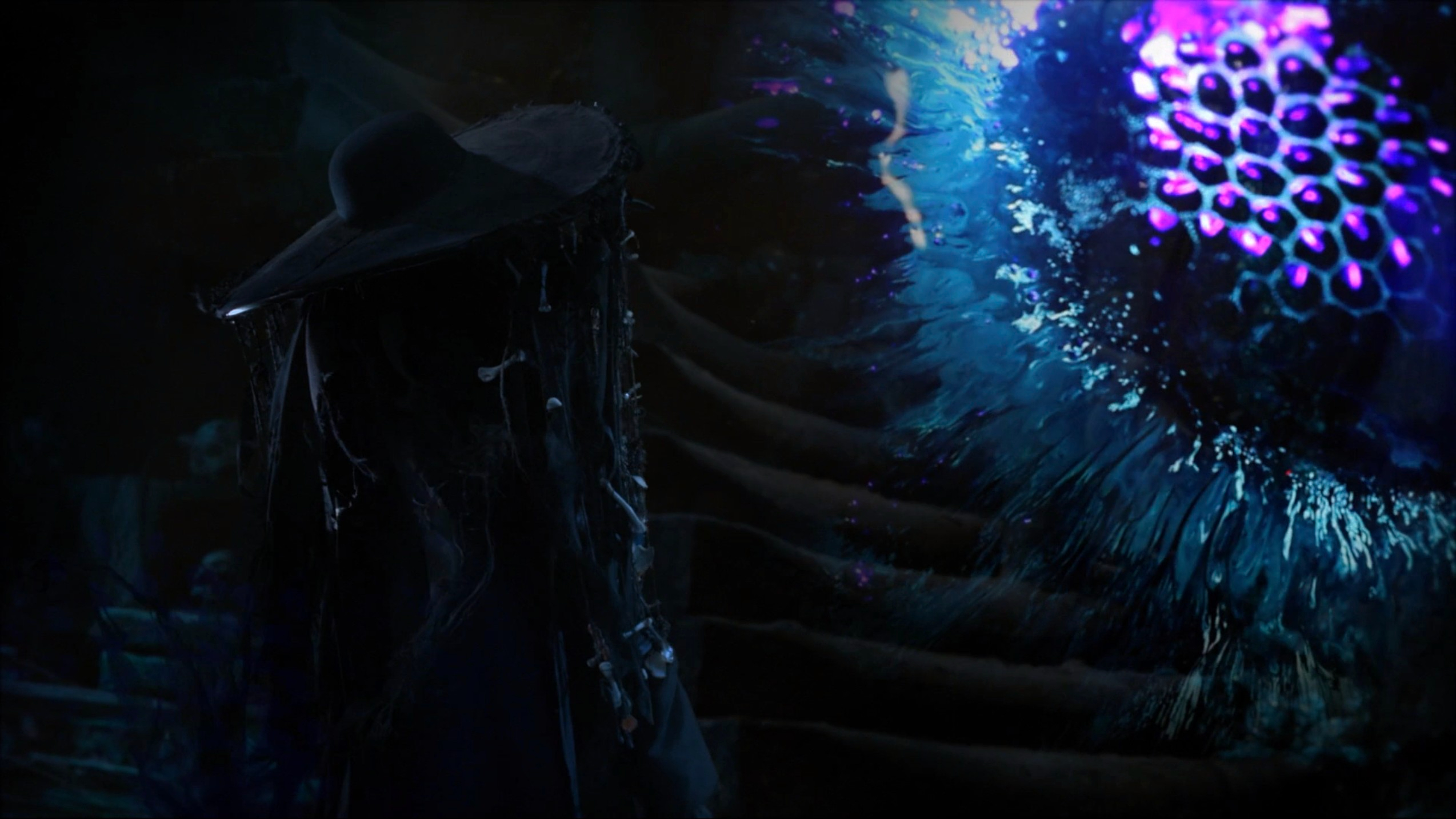
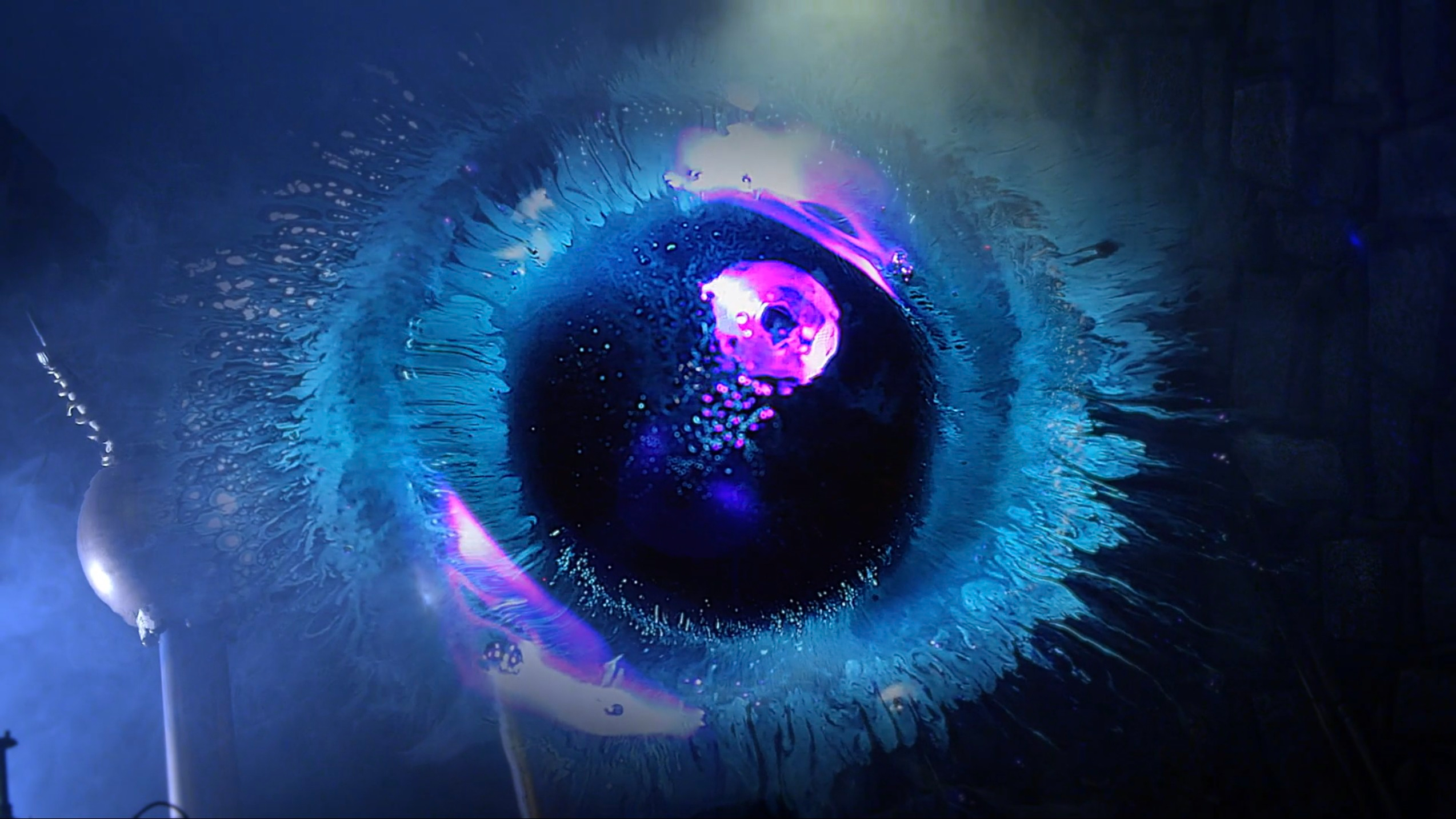
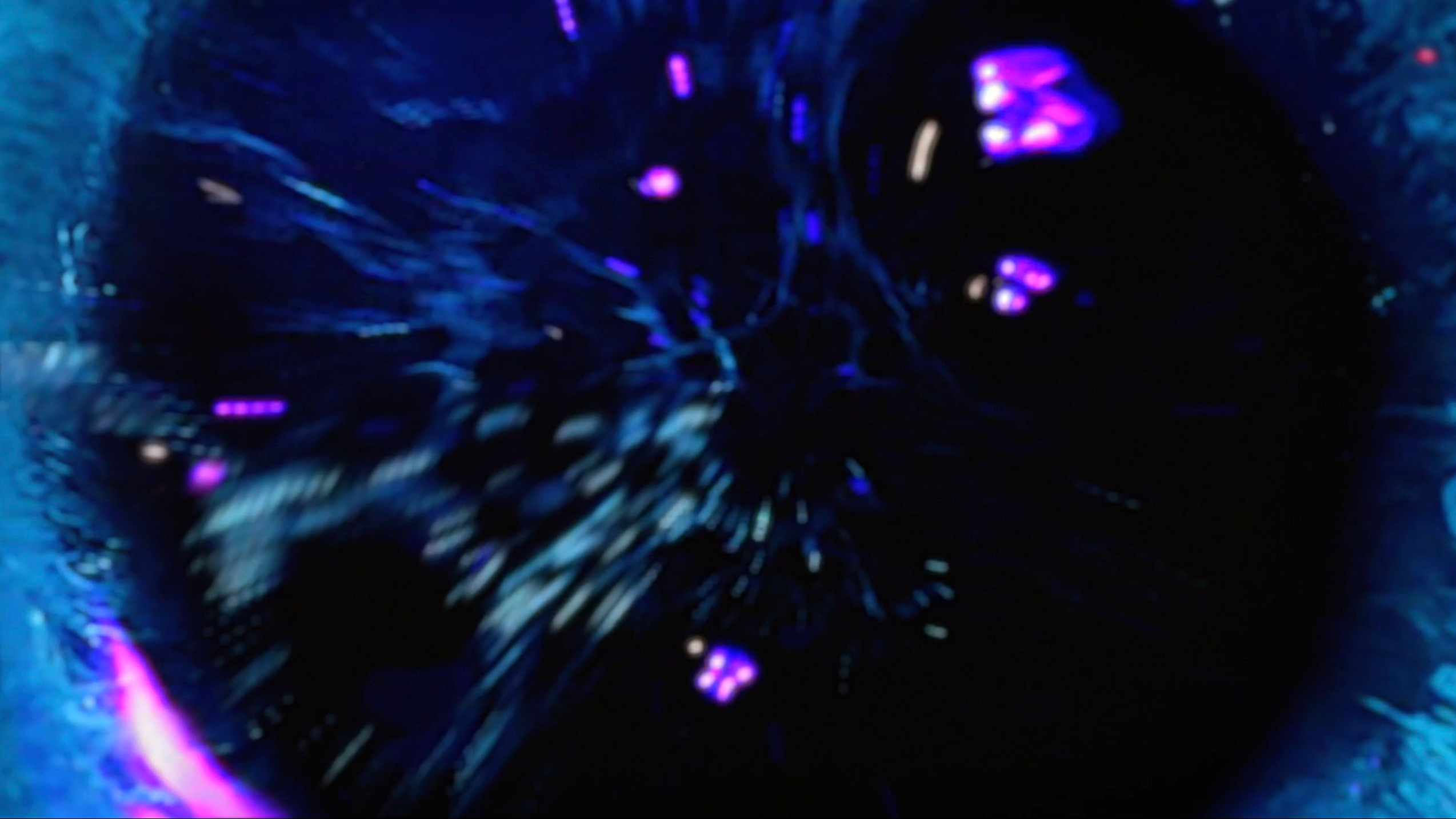
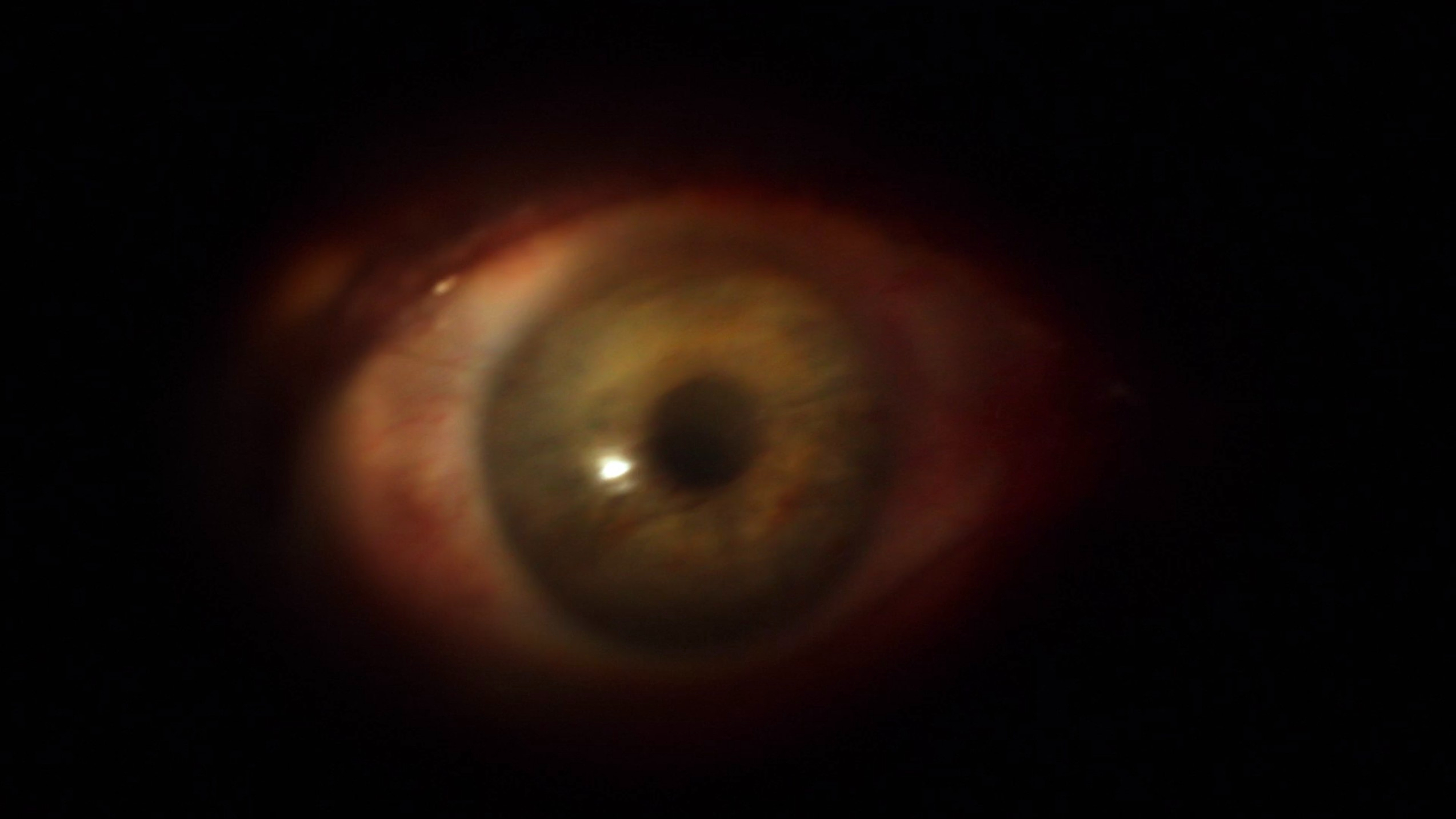
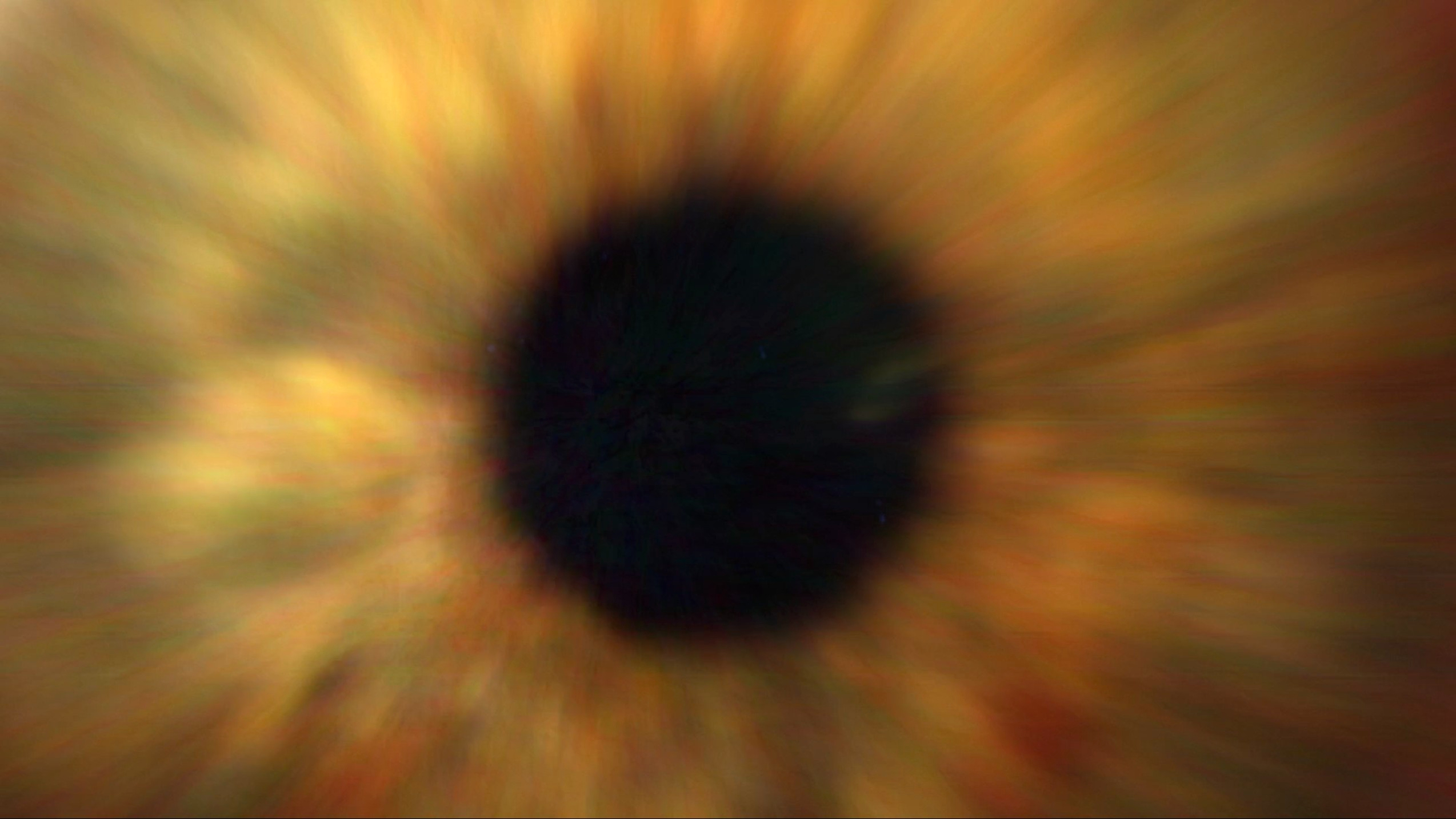
Regardless, I do think there’s some connection between the perception of the creature of the new universe and the eye. Especially since the eye closing is very tonally in-line with the clocks moving forward, everything wasting away, and the bomb going off. It’s almost like the person who envisioned all of this, or perceived it, can’t look at it anymore, as in it’s too overwhelming, or that it’s actually drained them to and left them unable to watch, or indicates their passing. That initial manic-ness of the open eye versus the calm closing does kind of capture, very succinctly, the binary aspect of our lives. We trash. We sleep. We’re alive. We’re not. We’re open and awash in the kaleidoscope of it all. We close forever.
There’s probably more discussion to be had about this but I think I covered enough here to leave you to your own theories.
What’s the factory in Mad God?
The factory segment is the film’s first extended sequence. The Assassin has traveled a good distance in this world before finally arriving at the outskirts of this immense factory. He sees these forges that produce these ashen humanoids that emerge and march to the factory and set about various tasks. For the next 7 minutes, The Assassin observes what happens.
What happens is a controlled chaos. There’s clearly a process at work. Things get processed and become products. But along the way a lot of those humanoids are unceremonious casualties. Crushed by one thing. Obliterated by another. Incinerated by something else. Life pales in comparison to the work. These things don’t work to live. They live to work.
Metaphorically speaking, it can hit close to home. Many of us grind and grind at our jobs and feel that we’re just caught in a compassionless capitalistic system that doesn’t necessarily care what happens to the employees. That system chews people up and spits them out. All day. Every day. That makes it easy to see the factory as simply a dramatization of what most of us experience.
There’s also something to be said about The Assassin’s fascination. This is really the only thing it takes the time to observe. It’s not too far from his situation with the Last Man. The Last Man has all these Assassins and sends them down into the world to blow things up. We see when The Assassin reaches the X on the map that there are hundreds of briefcases. If not thousands. That means that others have made that trek. They reach that spot but never get to detonate. The Assassins are just as expendable as these workers and caught in a very different yet similar enterprise.
As to what’s happening at the factory. At one point we see these slugs on a conveyor belt. A little later we see monoliths. The sense I got is that the slugs are raw material and the monoliths are final product. Somehow they convert the living thing into this charged object. Another machine then blasts the monoliths with some kind of energy that allows them to fly through the air. These are the same monolith’s that we see in the new universe that gives life and intelligence to the barren planet. That makes this pretty important work. And, again, pretty similar to our world. Most of us benefit from the hard labor of others. All of our electronics don’t just magically appear. It’s well known that factories in third world countries pay ludicrously low amounts to mass produce components. How many times have you heard about Nike’s labor issues? Or just the overall labor issues with clothing factories in third world countries? Many of us benefit from that labor without giving a second thought to the human cost of having what we have.
This sequence concludes in a brutal way. The Assassin is ready to leave and finds a hatch to escape. Just then, one of the humanoid workers approaches. These workers had seemed mostly void of consciousness. They marched. They worked. They got steamrolled or splattered. A few times we see a little more in the way of consideration, like when one pushes over a row of monoliths and squashes some others. Even though these things look human, they don’t necessarily seem human. Especially since they lack facial features. But when the one stands in front of The Assassin, the humanity is suddenly undeniable. And three is resonance. Both lack faces. Both are doing a job that will kill them. Both kind of lack autonomy. When a factory guard approaches, there’s a moment where The Assassin could save the worker. Instead, The Assassin drops into the hatch and leaves the worker. The guard wastes no time stomping the runaway into mush. It’s awful and one of, I think, the saddest moments in what is already a very sad movie.
What’s going on with the surgery and the baby?
After The Assassin activates the bomb timer, a monster that’s mostly tech parts swoops in and drags him away. It had actually been stalking him for some time. I would assume, given all the briefcases left in that exact spot, that the thing actively waits for the Last Man’s Assassins and plucks them when they finally reach this spot. That would explain the building we see that has all the operating rooms with all the dissected bodies. Every body was probably a previous Assassin.
What’s the point of the surgery? Well, it seems there’s some form of entertainment as the initial de-clothing of the Assassin happens before an audience. There’s a similar sense of dehumanization going on here as in the factory scene. We talked about the pain of the workers being to the benefit of other people who never really will know or recognize the workers. Here, The Assassin’s going through a very real ordeal that leads to his death. And people are viewing it, chuckling at it, applauding it. His pain is their entertainment. You can start to argue there’s some commentary here to the very real blood, sweat, and tears people put into their films and how often that aspect isn’t really acknowledged by the general audience.
Before the surgery takes place, there’s an emphasis on clocks. We know at the end of the movie the clocks are part of the end of the world. Of time passing. Of, essentially, mortality. And this is a very mortality-driven scene. It’s like the clock is signaling that time is running out or is up for The Assassin. Individual character, individual clock. Whereas at the end, it’s many clocks and the end of all things. Which is kind of a nice touch to show this motif scaling with the scale of the obliteration.
The symbolism ramps up once the surgeon enters and begins the dissection. Initially, we see organs and viscera. The kinds of things you’d expect to see inside a living thing. But soon after, the surgeon scoops out handful after handful of coins and jewels. Like…a treasure trove of coins and jewels. Like…a pirate would consider finding this many coins and jewels the best day of their life. My interpretation is that this represents the internal value someone has. Their wealth and worth isn’t just in their bank account or what they own. But each of us has varying amounts of true worth inside of us. The Assassin didn’t just have to be an Assassin. The same way the workers didn’t have to be simple, expendable workers.
I’d apply similar thinking to the book pages the surgeon finds. It’s symbolic of, say, The Assassin’s most private thoughts. Or maybe memories. Or even hopes and dreams. Or represents how The Assassin could have been a writer. Maybe another Assassin has a violin in them. Or another has cooking ingredients. Another has a microphone. Etc. etc. I don’t know if there’s a specific right answer here, but I think, at the very least, it just gets back to the rich interior world of a character that had seemed so outwardly devoid of emotion.
Eventually, the surgeon starts pulling out little creatures. To me, they look similar to the slugs from the factory but more like a worm. And even though it’s ugly, this was at the core of The Assassin. I think of it kind of like representing the soul. Or inner child. Or some vital component. With how the worm cries like a newborn baby, you can start to apply some of the same thematic associations inherent to a baby: hope, future, potential, life. That lines up with the fact the worm ends up as the alchemist’s main ingredient in creating a new universe.
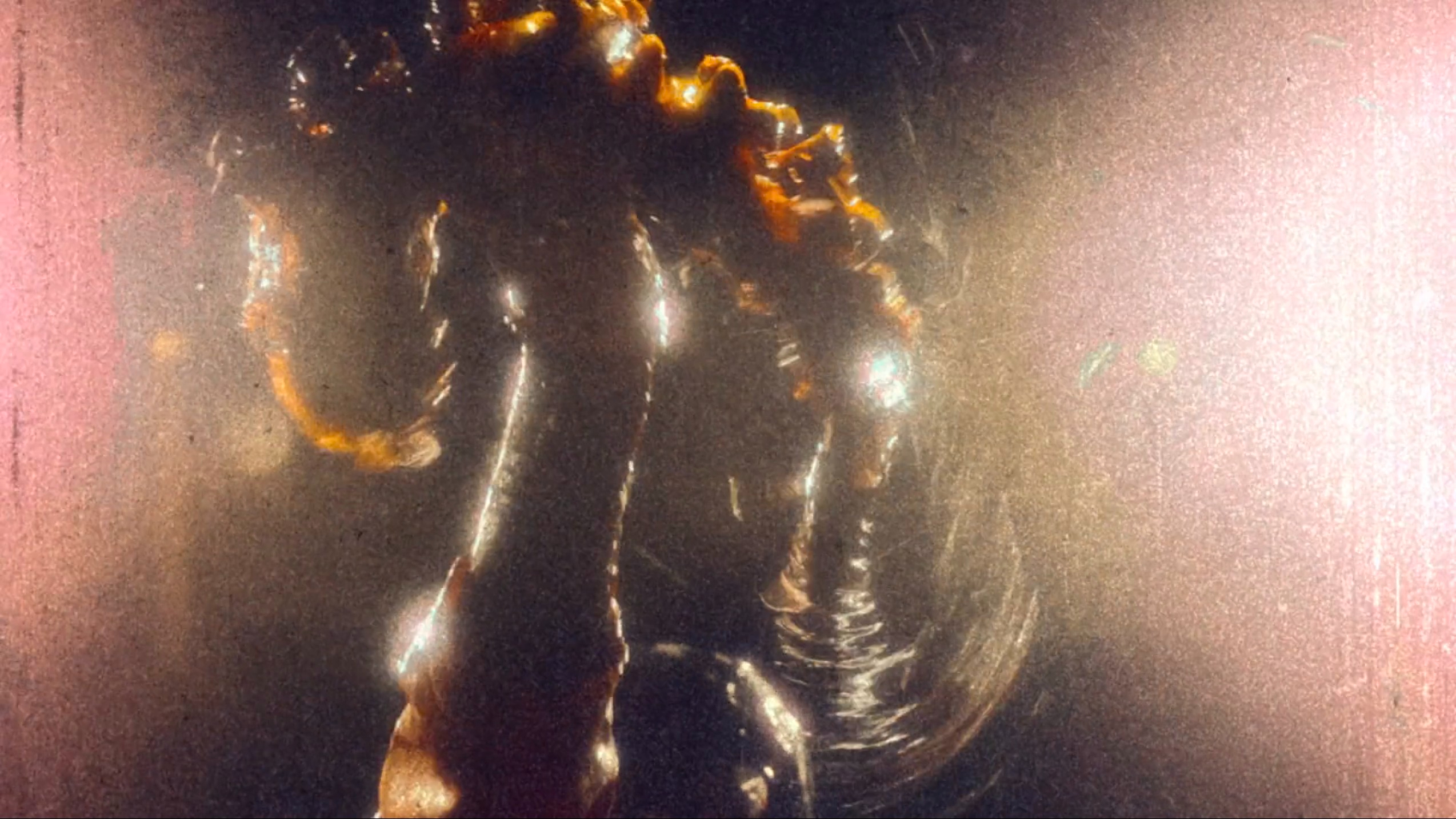
I guess the implication here is that there’s a whole system in place for capturing Assassins, dissecting them, finding the worm, then using them to create these new universes. To what end? I guess to find a better world? Or maybe an answer to how to save this world? Or just morbid curiosity? Whatever the hope, we know that at the end of it all they fail and the world eventually ends.
Who is the Last Man? What are the women witches doing under his table?
We first see the Last Man when the surgeon uses a probe to look into the mind of The Assassin. The monitor goes from static to visuals of the Last Man’s domain. He lives in a tower that’s very low to the ground (no Babel mistakes here) and in the midst of what looks like a prisoner of war camp. Some kind of gulag. There are Assassin-looking characters doing manual labor. Guards. Then a random assortment of others. It’s unclear if the Last Man is the overall leader of this or simply an observer of it. The Last Man isn’t stop motion but an actual actor (much like the surgeon and nurse).
We observe him look through his clothes and delight over having nice things. There’s materialism. It seems he’s preparing for the launch of another Assassin down into a world. But he has to wait for the completion of a map by these three witches that hang out under his table. They stitch the map together with thread and needle. I take these witches to be inspired by the Fates. Various ancient mythologies have a trio of female characters responsible for determining the fate of someone’s life. Usually, they weave a tapestry of the person’s life. At the end, they cut the thread. Tippett seems to play on this notion. The witches craft these maps that will guide the Assassin to the place where they should detonate the briefcase. Which, as we discover, is to destroy worlds. Pretty serious stuff. There’s an interesting question of whether the witches work for the Last Man or the Last Man works for the witches. It would seem since they live under his table that he’s the one in charge.
It’s never elaborated why the Last Man does any of this. Is he a dictator? Does he think he’s doing something good? Is he supposed to be God? Or embody the person who fancies themself a god? Is he “purging” these worlds God has broken? I wish I had a good answer. But that’s part of the fun when things are left a little vague. It allows you to theorize or just simply ask “What does it mean to you?”
The last thing worth pointing out is that after the Last Man launches the diving bell, he goes to a room to monitor the progress. We hear morse code SOS blasts. Which raises the question, who is he trying to signal? What is he hoping to find? Does he want to see if other humans still exist? Is it trickery, signaling for help when you’re actually hoping to harm?
Why reference 2001: A Space Odyssey?
We mentioned earlier that there are several references to Stanley Kubrick’s 2001: a Space Odyssey. First, the monoliths. Second, the baby in the jar. Why make that connection? To explain, I’ll need to recap 2001 a little.
2001 is generally looked at as a very confusing film. The nice thing is that it’s actually pretty basic. Aliens exist and gently guide the advancement of human technology via encounters with alien monoliths. Over the course of millions of years, they manage to lure humans to a specific point in outer space. There, they take someone, David Bowman, prisoner and hold him like an animal in a zoo. At the end of his life, Bowman comes face to face with a monolith. He then transforms into a fetus and appears in a glowing orb near Earth. He’s become the Star Child.
While it’s a very strange conclusion, 2001 is really about technology and the relationship humans have with technology. The first part is the discovery of technology by using a bone as a weapon. The second part shows the advancement of technology to space travel. The third shows the advancement to AI and this battle between humans aboard a spaceship and the AI that’s supposed to help them but ends up fighting them to the death. I think the very end with the Star Child gets at this idea of merging technology and humans. Of humans evolving from what they were to something entirely new where they kind of are technology. Not in the sense that they’re part machine. But in the sense of being more than flesh and blood. There’s power. There’s transcendance.
With that in mind, hopefully you can see the similarities between the monoliths in 2001 and their role in Mad God. 2001, each human encounter with a monolith led to a new development in civilization. In Mad God, a monolith lands on a planet and creates life and leads to humanity and civilization. Except in Mad God the end result, each and every time (it seems), is humans creating a Tower of Babel that angers God and leads to their annihilation. While 2001 sees hope, Mad God does not. Which is why there’s that shot back in the Alchemist’s lab where we see the face of this baby-looking thing stuck in a jar. It’s reminiscent of 2001’s triumphant Star Child but strips away the triumph. It’s simply an oddity in a flask. It won’t change the world or signal a new era of humanity. It will perish like everything else.
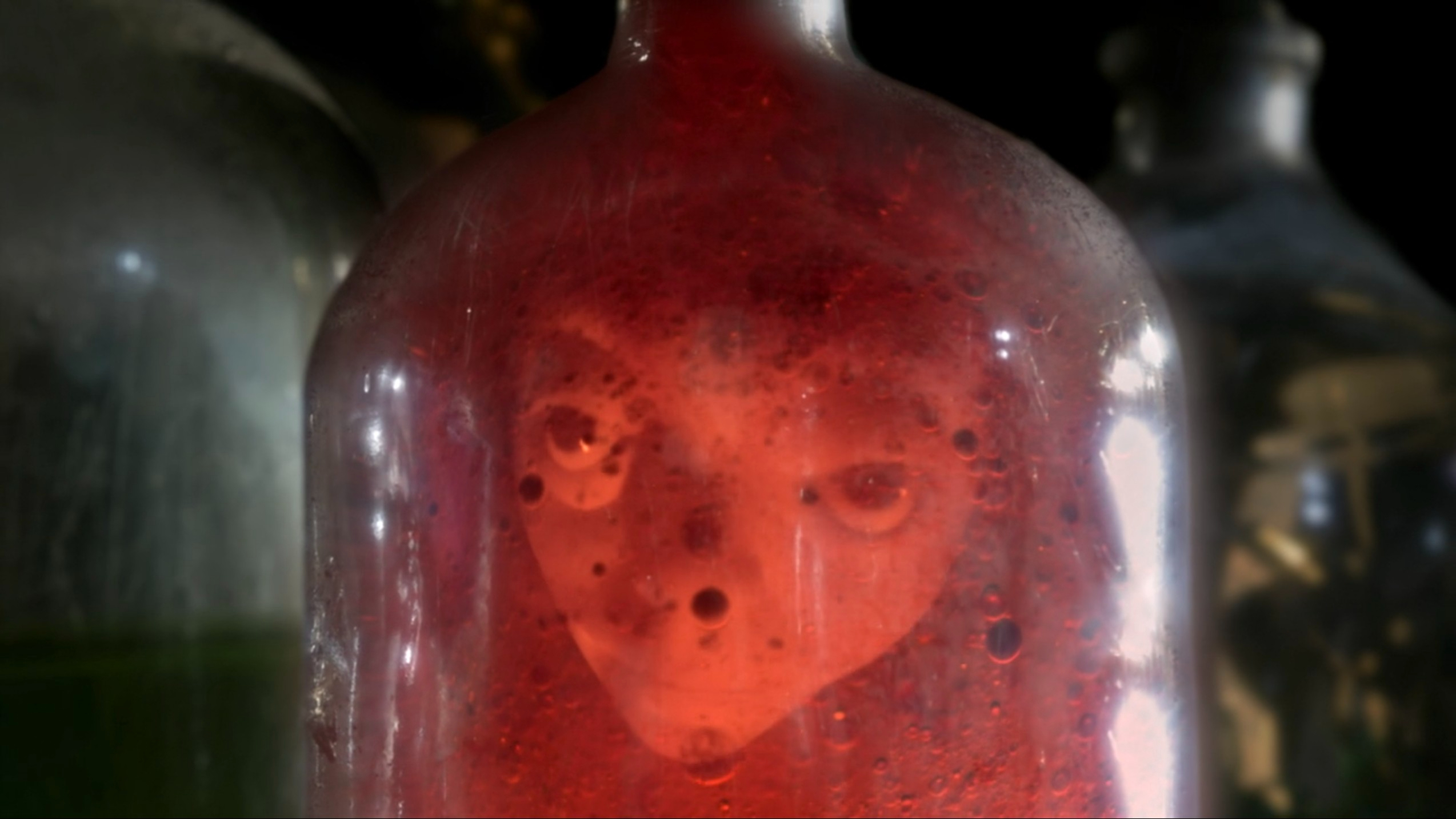
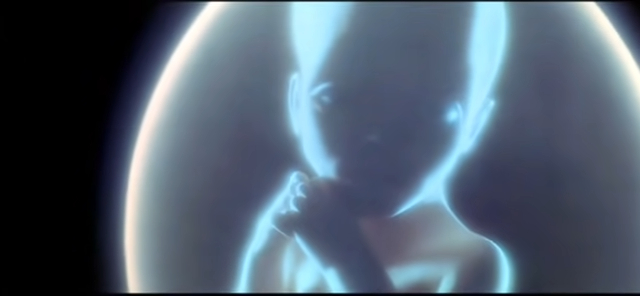
And Mad God does seem to have a good amount of…anti-technology sentiment. Most of the tech we see throughout the movie is used to outrageous ends. Whether it’s the people in the electric chairs. Or the factory creating the monoliths. Or the tech monster that steals The Assassin. Or whatever the Last Man is doing. Time and again, technology is put to brutal use. When we see the new universe created, its version of the Tower of Babel is a cityscape that doesn’t have a single figurehead standing atop the tower like in the opening scene. Instead, it’s an antenna sending out a radio signal. You get the idea that in that world, technology is the ruler.
Making such obvious references to a movie about that relationship signals, to me, that Mad God also wants to comment on that relationship. I look at 2001 as the glass half-full film about humanity’s relationship with technology and Mad God as the glass-is-entirely-empty film.
The end
Thanks for reading! If you have thoughts you’d like to share or questions you want to ask, leave a comment below!

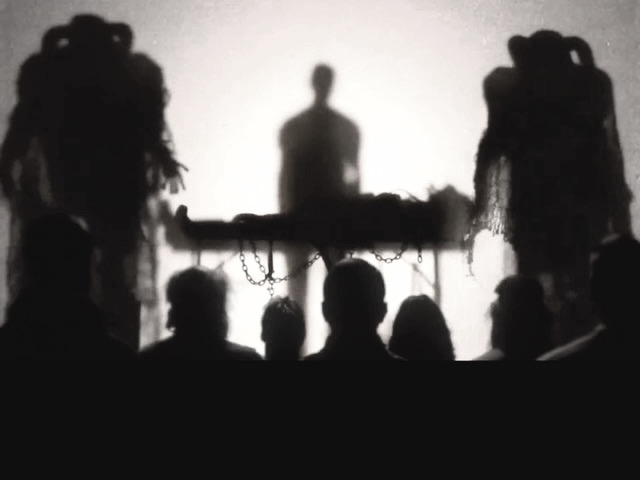
👏 Just wanted to say thank you for this article and your insights and thoughts. After reading it, and all of the comments, I can surely say that ‘Mad God’ made a whole lot of more sense to me.
Hey Gideon! Appreciate that. You should have talked to me when the theater screening ended. I had nothing. Thankfully, getting to watch it on Shudder and jump back and forth as I was writing really helped me get my head around it.
One of the monoliths crashes into a moon looking planet and seems to trigger life on that planet. That is different from what the monoliths represented in 2001 a space Odyssey, I think. Then, after life is started on that planet, the radio signal, I think, represents the fact that technology is our new God and it destroys us the same way a real God destroyed us when we reached the top of Babel. Perhaps?
It’s functionally different from 2001. But 2001, the monolith essentially triggers humanity’s relationship with technology (using a bone as a tool). Then thousands of years later, triggers an advancement in technology to seek out the signal. Then brings in Bowman and converts him into the Space Baby that returns to Earth, you imagine with some kind of super powers or something. So the monolith is kind of responsible for the birth of humanity as we know it. And then the rebirth. So Mad God takes that idea and reshapes it.
Radio signal definitely relates to technology. I wonder if it’s less a new god and more a golden calf? A false God? Which is why that world gets blown up? Hm.
Thanks to you . What a wonderful content. Thank you for definitely something to the idea of the world as the world beyond people vs the world of people. Think about the landscapes we see throughout Mad God and it’s a world devastated by civilization. So there’s some contrast to that.
Appreciate it, Robert!
This kind of film which includes a new mystery with each passage drives me crazy. I read this article rich in explanations and I can also leave my point of view and my interpretation on the feature film.
To begin with, I support the thesis that the universe of the film is happening in someone’s head or is a nightmare of a night. Indeed, the laws of matter are very different from reality. There is for example the manufacture of humanoid slaves printed several times per minute. I wonder how these lines of very simple mixed wools can look like humans, with a biological functioning. Then there is levitation technology. I find it odd that slaves have to manually move and lift the monoliths before they can levitate and travel great distances very quickly. It seems that someone. manipulate them with thought. Just with this kind of power, we could avoid coming to the point of exploiting life forms that suffer permanently. All this business to create blocks that don’t seem to play such a big role in fertilizing a new planet in the microverse. Because, indeed, it is the assassin who makes it possible to do that, but I will detail that later in my commentary. Thereafter, there is the constitution of the forsaken world of God. Everything is vertical. I imagine the universe of the film is a dream because it’s really detailed, but unrealistic. Gravity must be gigantic for the lower floors. The entire structure of the walls and pillars seem weakened. But, I imagine that everything takes place underground. The rocky walls support all these little people, but I have difficulty looking into the background to confirm my hypothesis.
To continue this momentum, I would like to talk about the roles of the characters. First there is the killer. With the article, I understood that coins represent the wealth of a person that we do not take into consideration. We throw this wealth on the ground as well as his talents which I think are represented by the books and papers. We throw the value of qqln. and we only take what interests us. The newborn worm is an important and exploitable thing and that’s all that’s interesting, without me knowing what it means to represent. There are hundreds of assassins waiting to role-drop the briefcases, but none explode. Instead, thousands are dropped off and form mountains of suitcases. I assume that all wasted efforts can one day be useful when there is enough of them. If they are real dynamites, whereas if only one suitcase is needed, there would be a disproportionate explosion if any assassin succeeds in his mission. Only there is a red bird that comes out instead of an explosion. This passage is still too vague for me, even with the explanations of the other comments and the article with the notion of time. But I will come back to the roles; including that of the presumed God. The problem I have with this statement is that this old man who seems to have the best living condition in this deleterious universe is that he is a mere human. He is certainly a Pope who has great powers, but certainly not a God who could destroy and reshape the Earth in such a compacted way. This man seeks to destroy the macabre enterprise that is taking place under his feet with on top of that a positive attitude despite the conditions outside his admittedly poor bunker, which remains the only comfortable place in the entire universe of the film. The guy has the luxury of materialism, clean clothes and long fingernails. I don’t think he is a God, because his power is political, not divine. Finally, there are the roles of the flying plague doctor whose message to embody this professional outfit and the atrocious thing with a baby’s voice that seems to give orders in the speaker and why his face parts are shown on rotating screens. For the human surgical doctor and the chubby thing, I understand better. The thing that has a terrarium that means even in a semblance of paradise can’t escape the violence of the outside world with the spider that eats the miniature residents. The terrarium exists for what. In any case, it makes the shapeless thing laugh, but he too allows himself to be materialistic. He has various objects and he is an alchemist. From what he’s doing to his terrarium, I imagine he’s having fun creating worlds with the thing that allows you to create a microverse, but maybe it’s not to try to give hope . Actually, I have a terrible theory. If the alchemist is trying to create worlds, but it’s only to pass the time, then maybe the movie universe is a microverse that only exists to distract.
Finally, I would like to make another comment, but a personal one. I would like to find a short film posted on YouTube which takes up the idea of a diving bell which will visit the depths and discover worlds, but which is a kind of rocket which disassembles as it falls. We can see the blue sky before the box is released and falls into the void. Everything is white and clean, then you go downstairs and everything looks cold and messy and dark. The traveler is guided, a dweller gets eaten by vines on the corner of a wall, and the deepest level of the underworld can be seen near the end with black mouse-like life forms giving off white light. We’re somewhat in the same concept of Mad God, but it’s a simple short film that surely lasts between 15 and 25 minutes. I have been searching for it for eight years now on YouTube, but to no avail. That’s why I discovered the movie Mad God. It’s a great stop motion.
Terrific analysis, very orderly laid down too.
I agree with some others who in the thread pointed out the importance of the floating creature. Its appearance is punctuated by ethereal music that accompanies us through great part of the last act of the film, and I thing this same music makes this figure stand out greatly. I agree that, as already said, we could consider it to be a benevolent God, as opposed to the many mad gods that populate this magnificent and visionary film.
Words accompany the appearance of the floating creature: the language is Italian, luckily enough my mother tongue, so I managed to find where the sentences are from. It’s an extract from Federico Fellini’s 1969 film “Satyricon”, more precisely the last words the dying poet Eumolpus recites to the main character Encolpius (I know, these names!).
It goes like this (Italian first, then my own translation, which is more literal then the poetic, yet loose one the film subtitles provide):
I poeti muoiono Encolpio. Ma che importa, la poesia resta. Fratello mio, sei stato l’ultimo compagno della mia vita. Potrai dire: “Ho conosciuto Eumolpo, il poeta”. [Mad God cuts some here: Ah, che dire, se fossi ricco come Trimalcione ti lascerei un podere o una nave, ma ti posso fare erede solo di quello che ho avuto io. Ti lascio la poesia, ti lascio le stagioni,] soprattutto la primavera e l’estate. Ti lascio il vento, il sole, ti lascio il mare, il mare che è buono ed anche la terra è buona. Le montagne, i torrenti, i fiumi e le grandi nuvole che passano solenni e leggere. Tu le guarderai e forse ti ricorderai di questa nostra breve amicizia. E ti lascio gli alberi e i loro agili abitanti. [missing in Mad God: L’amore, le lacrime, la gioia, le stelle. Encolpio, ti lascio] i suoni, i canti, i rumori, la voce degli uomini e la musica più armoniosa. Ti lascio.”
“Poets die, Encolpius. But that doesn’t matter, Poetry is here to stay. My dear brother, you’ve been the last companion in my life. You will have the honour to say: “I met Eumolpus, the poet”. [What can I say, had I been rich like Trimalchio, I would have left you a farm or a ship, but I can bequeath you only what I myself enjoyed. I leave you poetry, seasons,] and above all, spring and summer. I leave you the wind, the sun; I leave you the sea, the sea that is kind, and the earth that is also kind. Mountains, brooks, rivers and the big clouds who float by solemnly and lightly. You’ll look at them and maybe you’ll remember this brief friendship we had. I leave you the trees and their agile inhabitants. [Love, tears, joy and the stars. Encolpius I leave you] sounds, songs, noises, the voices of men and the most harmonious music. I leave you.”
The film Fellini Satyricon is an adaptation of the very unique work with the same name written by the ancient roman poet Petronius (27-66 CE), a work, which we possess heavily incomplete. We only have parts of books 15 and 16, out of the over 20 books that made up the whole. The Fellini adaptation of this incomplete work is also very fragmentary, dreamlike, a true experience more than a plot-driven story. It is clear the fascination this movie has played on Tippett, and how Mad God shares these same characteristics.
What I cannot put my finger on is why Tippett chose this extract from Fellini Satyricon, why it was used in this passage, and exactly where this voice comes from. My only thesis is that it is a commentary on the passage of the newborn creature from the hands of the putative-mother nurse to the floating creature, like an offer to a God. It’s then the nurse that leaves the child to be used for a greater purpose, as this same child will go on to shape new worlds, and “seasons and sounds and songs” and basically life.
I hope these 2 cents of mine may help us interpret the figure of the floating creature better, so I am eager to hear other interpretations of this.
What a wonderful comment. Maybe a top 10 comment on the site all time. Thank you for that insight. There’s definitely something to the idea of the world as the world beyond people vs the world of people. Think about the landscapes we see throughout Mad God and it’s a world devastated by civilization. So there’s some contrast to that. Then there’s something to the one guy being “The Last Man” and the Satyricon quote addressed to someone who has been left behind. Then maybe something to the idea of poetry and the alchemy enacted by the floating creature? I don’t really have a definitive idea at the moment. But those are just some of the initial connections that I’m seeing and would explore if I was going to go deeper. I mean, the poem talks about what’s left behind but the movie ends with bombs erupting and destroying everything. Hm.
Regarding The Factory Chapter
The Factory is a representation of the workplace. Workers, fodder for the great machine, for Moloch, feeding the industrial complex.
In The Factory the workers are indeed mistreated, and a deformed and sadistic supervisor class is whipping them to work harder. These task masters are shown as quite brutal.
Interestingly enough, over the PA system/TV is the voice of the administrator, the administrator’s voice that of a babbling baby. A baby’s voice implies a lack of experience, a lack of wisdom, and in most work places those in higher managerial roles often have less seniority and experience than the workers and front line supervisors they command. They babble orders, policies, and instructions that make no sense, but supervisors(the task masters) and workers still listen and obey.
The workers have no path or future except to be fodder for the machine. In the real work place there is no real career path, and workers are just expendable tools to accomplish an objective. Just like in the real work place worker safety comes second to the objectives of the corporation or agency.
Great explanation. Right off the bat I knew I would be pretty dumbfounded by the end. I feel I followed pretty well, considering. I understood the baby making a universe. But you put so much into context that I did not I interpret. Thanks for this. I immediately came looking for this right after I finished.
Happy to hear that! Same thing happened to me. Saw it in theaters and was just like “WTF.” Went home, and watched it on streaming immediately after and got to writing lol. The second viewing and being able to keep jumping back and forth between scenes made contextualizing everything a lot easier.
Really really interesting write up. I found this article by googling something along the lines of “mad god explanation” to see if there was one singular answer. Glad there isn’t because that would mean I missed something obviously.
You gave a lot to chew on, when my friend has time I’ll rewatch it with him.
Personally I disagree with it having an anti technology message. To me technology was only the tool used to inflict pain, the tools themselves aren’t evil or bad only the creatures using them.
Not so much anti technology as much as going along with beings in an evil world with evil intentions. Of course, that’s only my thinking.
A really fun read thank you!
That’s a good counter point about technology! Especially since the movie is very bleak about people lol. Maybe it dovetails to the idea that people may always use tech for negative things because people are negative things? Which is bleak. But…this movie is pretty bleak lol.
Hope the re-watch goes well!
I think it’s worth noting the origin of the faceless workers near the beginning.
The Assassin walks by a group of gigantic humanoids that appear to be eternally tortured in electric chairs. This torture causes them to defecate and urinate constantly, and this mixtures is captured and funnelled directly into the mouth of some kind of trapped biomechanical creature who has.no choice but to swallow it.
That creature’s head is attached to a series of pipes or tubes that lead down into a machine that molds and presses this twice digested waste into the Faceless Worker humanoids. I think of them as “misbegotten fecal demi-humans.”
Their existence is the result of filth derived from endless torture, and their lives are nothing but toil, pain, and sooner or later brutal deaths.
No part of them is anything one could consider valueable. Is this how a massive capitalist structure sees people themselves?
When I thought the movie couldn’t get any bleaker lol
I assume those giant bodies getting electrocuted should have had the worker drone bodies being shoveled back into their mouths. Where is all this fecal matter coming from?
Haha, what a sentence. Probably? That would make it quite a cycle.
Thanks I agree with a lot of your interpretations. Some while I watched and many from reading this and reflecting on it. You did a great job of summing it up and presenting it as possible interpretation rather than telling us what to think. I appreciate it as I am not ready to watch it again for a while. There’s enough nightmare fuel to last me for some time.
Hahah thank you. I was a bit intimidated after I saw it in theaters, but just scrubbing back and forth like a dozen times via Shudder made it a lot more digestible/approachable.
I too often see planets aligned and instantly think of school children. A very normal and understandable simile.
Interesting interpretation, but one thing I haven’t seen anyone comment on is the potential connection between the floating ghostly figure and the Assassin(s). Both wear masks that to me feel both different and somehow similar, like they’re differently shaped but the eyeholes look similar. But what does it for me is the figure tapping the page of the grimoire exactly like the Assassin taps the map throughout the film. That floating figure fascinates me too, I feel like there’s a lot of significance to it.
Had a theory that maybe that figure is a former Assassin that betrayed the Last Man and/or gained his independence and became a part of that hellish world, but possibly, as you mentioned, for oddly noble reasons. There also might be a parallel between that figure and the Last Man, as they both have similarly large and clawed hands, and both seem to be the respective masters of their domains. With the mysterious figure, everything he encounters seems to obey him, and although it’s debatable I’d also say the Alchemist defers to him a little, making me think that figure is the master of this realm. He may also be its prisoner too, though, and seeking to creating a universe that he can escape into. He could be the figure at the top of the Tower of Babel shown in the beginning of the film, cast down and condemned by God as a Lucifer-esque figure.
I definitely think there’s a connection between the figure at the Tower of Babel and the floating ghost. They have the same flowing robes. And it sets up this tension between a figure who is above and a figure who is below. And you do have the bit of opposites with the Last Man attempting to blow things up and the floating ghost attempting to create worlds. It could be a former assassin as we see assassins have moments of reflection and consideration. But I”m not sure there’s quite enough direct or even indirect information that supports the theory. Details like the mask make for a good hypothesis, but it’s just a bit too mysterious I think to really nail down such specific world details. But it does give enough space for the viewer to come up with interpretations like this!
It has just ocurred to me (after watching the movie and reading your reply) that, perhaps, The Last Man is, indeed, god, and the Assasins are naught but angels as described in Kabbalah, where they are said to lack “free will” and, thus, are “condemned” to do the bidding of God without questioning or real say on it. The Floating Ghost could be Lucifer, trying time and again to build a functional universe by using “angel essence” (the larvae inside the Assassin) which would be “the closest thing to god” he would have access to. Alas, he always fails because, if The Last Man IS God, he too is a failed creator (and, also, mad). So, there, we would have not ONE mad god, but TWO: one mad at his own flawed power, incapable of creating a functional universe and, thus, compelled to destroy it again, and again, and again… and a second one… mad… for trying to imitate an already flawed divinity, doomed to fail as much as his own creator.
Stories of this kind allow themselves to be interpreted in multiple ways and that’s a rare kind of beauty on itself. Again, thanks for your analysis. It was quite enlightening.
I could see Tippett inspired by that dynamic and doing some version of it or incorporating elements of it. And so many mythologies kind of overlap, so even if it wasn’t directly God/Lucifer maybe it’s another myth that share similar dynamics which make the God/Lucifer connection applicable. But, you’re absolutely right, the multitude of interpretations allowed is such an awesome thing. Thanks for reading!
Really appreciate this analysis and your thoughts. I just finished watching it and it made a huge impression on me. Your exploration of the meaning and themes was very well done. One thing I am unsure about though is your description of the map the “fates” create as driving the assassin to his destination to plant the bomb. There’s two trips down in a diving bell though, and two maps I think. The movie starts with the second trip and a paper map the assassin reads from which falls apart as his journey progresses. I think it’s a second map, because he follows the one created by the fates all the way to the final destination of the inverted tower. That’s the goal and as far as it goes, and we end with him driving the jeep into the abyss. I don’t know how the two trips link up, or how he gets into a new diving bell or the same one on a different path. But his gear looks a lot more weathered and run down by the time he heads down to actually plant the bomb. Although I’ll admit he does have a briefcase in both, the pile of them he passes in the war zone is a lot smaller than the mounds at the bomb site. The two (or connected, maybe the same?) maps puzzled me, and I’m not sure what that adds to the larger picture.
I appreciate that! Yes, definitely two trips and two maps. I’d argue it’s probably two different assassins as well. We saw that the crazy guy had a whole army of them. Granted, we do see the second trip (which might be a precursor trip) via the monitor as the doctor looks into the assassin’s brain. But I took that more as narrative liberty of showing us other happenings. Rather than a memory of the assassin. It seems like the assassins make one way trips and they start with the diving bell. So I can’t imagine the one on the operating table is the same one that went to the inverted tower. The map used by the assassin at the start of the movie is a map that seemingly has been used many many many times. I’m not sure how they keep retrieving it. But you can see how many other bombs are in the location that the assassin plants its.
I just think we’re supposed to realize that there’s more than one world and as there’s this “mad god” trying to destroy these worlds there are also people trying to create new ones. Which is what happens in the operating room. They take the piece of the assassin and use it to create a whole new universe.
Thank you for your interpretation. It really helps make more sense of the movie. While I understood some of the metaphors, like the faceless drones doing the same work day in day out whilst being oppressed or killed without consequences, I had some difficulty connecting the dots with some other scenes (i.e the surgeon).
BTW, throughout the first assassin’s journey through the nightmarish landscape I kept thinking of Pieter Bruegel’s depiction of Hell. Perhaps Tippet was inspired by some of the imagery.
Cheers!
Actually, the portrayal of Hell by Hieronymus Bosch, another Dutch painter and contemporary of Bruegel, are even closer to those in Tippet’s movie.
When the movie first ended, I was left pretty dumbfounded as to the connections haha. Thankfully it being available on Shudder helped a lot since I could keep watching and jumping back and forth and start to see the whole of it a little better. And, man, looking at those works by Bosch, yeah, I imagine he had to have looked at those or at least something inspired by them.
Thanks very much for this. I applaud your courage in putting together one of the most detailed interpretations of Mad God that I’ve seen so far on the internet. Mad God might be the most extreme example of dream logic I’ve ever seen in a movie: the symbolism is obviously incredibly rich in meaning, yet the barrage of imagery appears to be almost completely incoherent, defying any attempt to fit the events or characters into a rational narrative structure. There’s so much going on that it would require almost a frame-by-frame commentary to fully explore all the symbolism. But I’m going to throw my hat into the arena, and my personal interpretation of the main theme is more of a psychological one.
The priest, the “Last Man,” is just an ordinary guy. One of us here in the real world. But he is also the “Mad God” of the title, and the worlds that he creates and destroys again and again are the worlds within his mind. The Last Man sends Assassins deep into these “worlds” of the unconscious mind because he is deeply unsatisfied with what goes on down there, and in his madness, he can conceive of nothing else to do other than repeatedly sabotage and destroy. The words of Leviticus 26 resonate deep within us, because in a psychological sense, we know full well that we are the all-powerful creators and destroyers of our inner worlds.
It’s no wonder that we want to destroy these worlds. The unconscious mind is a place in which, in a deep philosophical sense, all the horrors of the universe that could possibly be conceived not only exist, but are given free reign in a nightmarish orgy of violence, tyranny, emptiness, darkness, pain, and suffering. The infernal machines of the mind enslave us and torment us. These very machines are the root cause of all the horrifying ways in which we enslave and torment everyone around us.
The disembodied eye that begins and ends the movie is the Eye of Providence. A psychological interpretation of the Eye is that we are, in the final analysis, conscious minds that see all in our universe. What do we do with this supreme gift, this supreme power? Do we endlessly destroy and rebuild Towers of Babel, monuments to our pride and egotism? Or do we find a way to transcend? Mad God is perhaps the most mercilessly grim work of art I have ever encountered, because it appears to provide not even the faintest glimmer of hope that such transcendence is possible.
Hey Andrew! “one of the most detailed interpretations” is what we aim for! Yeah, the dream logic is definitely very present. I read that Tippet spent a lot of time studying mythology and philosophy. So I think there’s a lot of esoteric references scattered throughout as well. So I’m hesitant to agree on the imagery being incoherent. Like I can very easily see that being the case. But I also wonder if the nuance of where he drew some inspirations means that it’s functionally incoherent to the viewer even if it was purposeful by Tippet. Again, not saying that’s the case. Just kind of withholding judgment at the moment. Agreed that understanding the full scope of the symbolism would be a huge undertaking.
And, yeah, that analysis I think fits a lot of what we see. It’s kind of the lovely thing about esoteric symbolism, it opens itself up to so many fascinating and thought interpretations.
Very much in agreement it being one of the most grim works of art. It’s brutally bleak. And there’s something kind of wonderful about that? Though Melancholia is also up there.
Thanks Chris, I’ll re-watch it with renewed confidence.
Let me know what you think on the second watch!